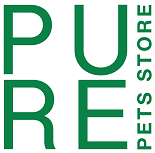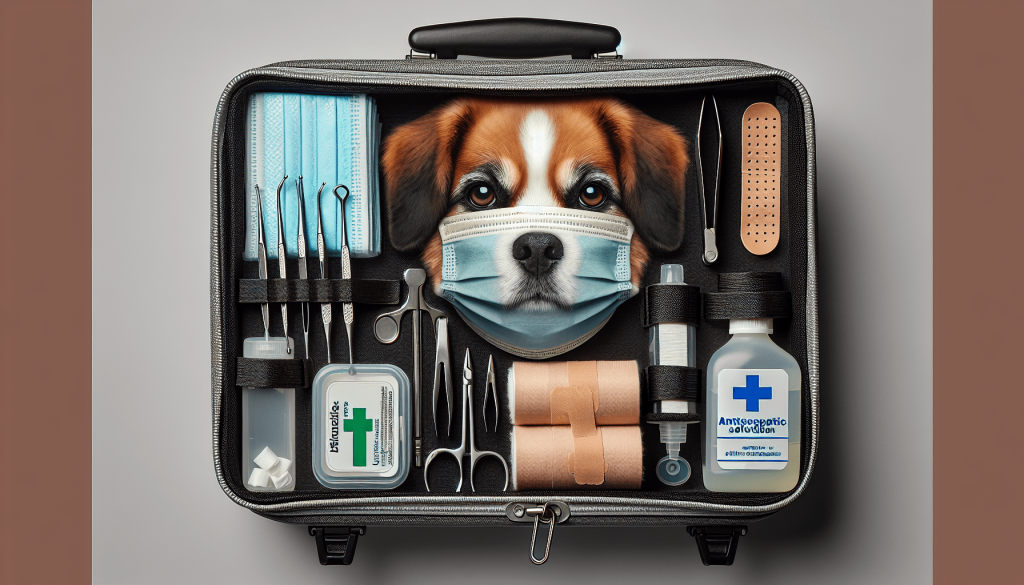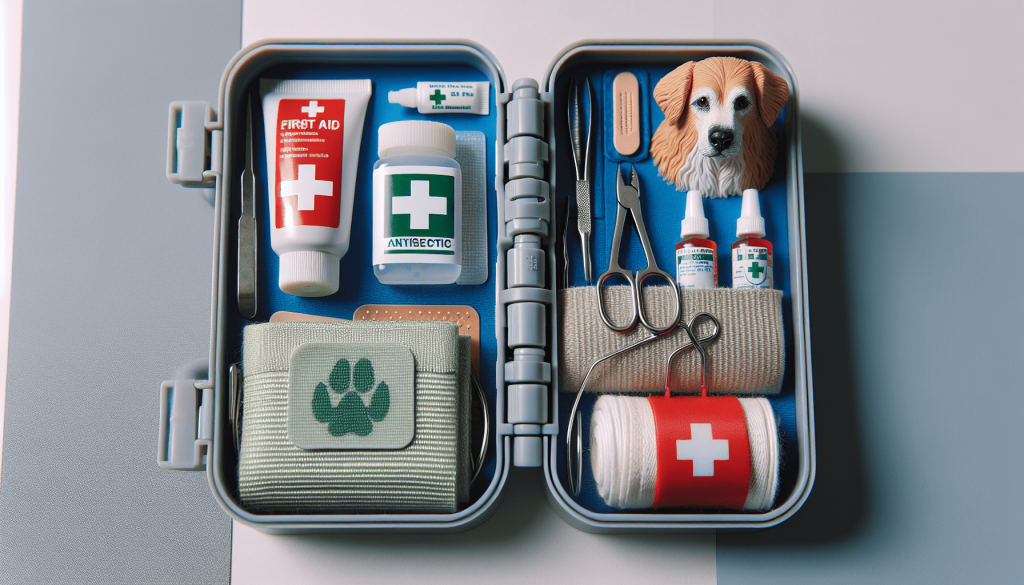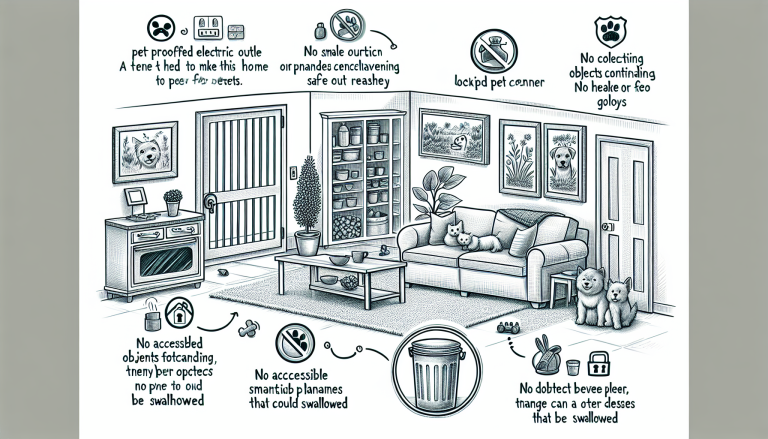When it comes to the well-being of your beloved four-legged friend, being prepared for any situation is key. Just like humans, dogs can also experience accidents or sudden health issues that may require immediate attention. That’s why it’s essential to have a well-stocked first aid kit specifically tailored for your furry companion. From bandages and antiseptics to tweezers and gloves, this article will provide you with a comprehensive guide on the must-have first aid supplies to ensure the safety and comfort of your dog in times of need.
Table of Contents
ToggleBandages and Dressings
Gauze pads
Gauze pads are a must-have item for any dog owner. These sterile pads are perfect for covering wounds and providing a clean environment for healing. They are highly absorbent and gentle on your dog’s skin, making them ideal for applying medication or cleaning wounds. Keep a supply of gauze pads in different sizes to accommodate various injuries.
Non-stick adhesive pads
Non-stick adhesive pads are another essential item to have in your dog’s first aid kit. These pads are designed to stick to the skin without causing any pain or irritation when removed. They are especially useful for wounds that are prone to sticking, such as those with heavy discharge or oozing. Non-stick adhesive pads help protect the wound and promote healing without causing further trauma to your furry friend.
Self-adhesive bandages
Self-adhesive bandages, also known as cohesive bandages or vet wrap, are incredibly versatile and useful for managing injuries. These bandages stick to themselves without the need for any additional adhesive, making them easy to apply and remove. They can be used to secure dressings, provide support to sprained joints, or stabilize fractures. Self-adhesive bandages are also great for creating a pressure bandage to control bleeding.
Antiseptics
Antibacterial ointments
Antibacterial ointments are an essential part of your dog’s first aid kit. They are designed to prevent infection in wounds and speed up the healing process. These ointments usually contain ingredients like bacitracin or neomycin, which have antimicrobial properties. Applying antibacterial ointment to your dog’s wound can significantly reduce the risk of infection and promote faster healing.
Hydrogen peroxide
Hydrogen peroxide is a common antiseptic that can be used to clean wounds. It works by releasing oxygen when it comes into contact with blood or damaged tissues, which helps to clean the area and remove debris. However, it’s important to use hydrogen peroxide with caution as it can also damage healthy tissues if used too frequently or at high concentrations. Consult your veterinarian before using hydrogen peroxide on your dog’s wounds.
Povidone-Iodine
Povidone-Iodine, also known as Betadine, is an antiseptic solution commonly used to clean wounds in both humans and animals. It has broad-spectrum antimicrobial properties, meaning it can kill a wide range of bacteria, viruses, and fungi. Povidone-Iodine is particularly effective against skin infections caused by bacteria or yeast. However, it’s important to dilute the solution as directed before using it on your dog’s skin.
Topical Medications
Hydrocortisone cream
Hydrocortisone cream is a topical medication that can provide relief for itching, inflammation, and redness caused by various skin conditions. It works by reducing the body’s natural immune response and reducing the inflammation in the affected area. Hydrocortisone cream can be used for minor irritations, insect bites, or allergies. However, it’s important to use it sparingly and under the guidance of a veterinarian as prolonged use or incorrect application can have side effects.
Antifungal cream
Antifungal cream is a valuable addition to your dog’s first aid kit, especially if your furry friend spends a lot of time outdoors. It can be used to treat fungal infections like ringworm or yeast infections. Antifungal creams contain active ingredients like miconazole or clotrimazole, which help to eliminate the fungus causing the infection. Remember to follow your veterinarian’s instructions when using antifungal cream on your dog.
Antibiotic ointment
Antibiotic ointment is an important component of your dog’s first aid supplies, particularly for minor cuts or abrasions. It helps to prevent bacterial infection and promotes quicker healing. Neosporin or similar over-the-counter antibiotic ointments can be used on your dog’s wounds, but it’s crucial to consult your veterinarian if the wound is deep, punctured, or shows signs of serious infection.
Tick and Flea Medication
Tick and flea prevention
Prevention is always better than cure when it comes to ticks and fleas. There are various tick and flea prevention products available, including spot-on treatments, oral medications, and collars. These products work by repelling or killing ticks and fleas, preventing infestations and the transmission of diseases. Consult your veterinarian to determine the most suitable tick and flea prevention product for your furry companion.
Tick removal tool
Despite taking preventative measures, it’s still possible for your dog to encounter ticks. In such cases, a tick removal tool is invaluable. These tools are specifically designed to safely and effectively remove ticks from your dog’s skin without leaving any parts behind. It’s important to remove ticks promptly and correctly to reduce the risk of disease transmission. Make sure to familiarize yourself with the proper tick removal techniques and keep a tick removal tool in your first aid kit.
Wound Cleanser
Sterile saline solution
A sterile saline solution is an excellent option for cleaning wounds on your dog. It’s gentle on the skin, non-irritating, and can effectively flush out debris or bacteria from the wound. Saline solution is often preferred over tap water as it has a balanced pH and doesn’t interfere with wound healing. You can buy premade saline solution or make your own using distilled water and salt. Remember to consult your veterinarian for specific instructions on wound cleansing.
Wound cleanser spray
A wound cleanser spray can be a convenient option for cleaning minor wounds or irritations on your dog. These sprays typically contain antiseptic agents, such as chlorhexidine or benzalkonium chloride, to disinfect the wound and promote healing. Wound cleanser sprays are easy to apply and can provide thorough wound cleansing without the need for extensive rubbing or wiping. However, it’s important to follow the instructions on the product and consult your veterinarian if the wound is severe or infected.
Emergency Medications
Activated charcoal
Activated charcoal is a valuable emergency medication to have on hand in case of accidental ingestion of toxins or ingestion of something harmful to your dog. It works by binding to toxins in the gastrointestinal tract, preventing their absorption into the bloodstream. Activated charcoal should only be used under the guidance of a veterinarian, as they can advise on proper dosage and timing.
Hydrogen peroxide
Hydrogen peroxide, although mentioned earlier as an antiseptic, can also be used in emergencies to induce vomiting in dogs. It should only be used under the direct guidance of a veterinarian, as inducing vomiting may not always be appropriate or safe depending on the situation. Never attempt to induce vomiting in your dog without consulting a professional.
Diphenhydramine (Benadryl)
Diphenhydramine, commonly known as Benadryl, is an antihistamine that can be used to provide temporary relief from allergy symptoms or mild allergic reactions. It can help reduce itching, swelling, and hives. However, it’s essential to consult your veterinarian before giving Benadryl to your dog, as they can advise on the appropriate dosage based on your dog’s weight and health condition.
Splinting Supplies
Cotton padding
Cotton padding is an essential component for providing comfort and support when splinting a dog’s injured limb. It helps protect the skin from direct contact with the splinting material, reducing the risk of pressure sores or irritation. Cotton padding should be applied generously around the affected area before applying the splint.
Splint material
Splint material, such as rigid foam or padded aluminum, is crucial for immobilizing and stabilizing a dog’s injured limb. It should be cut to the appropriate length and width to provide adequate support. When applying a splint, make sure it extends beyond the joints above and below the injury to prevent any unnecessary movement.
Adhesive tape
Adhesive tape is used to secure the splint in place and prevent it from shifting or slipping. It’s important to use tape that is specifically designed for medical use and safe for your dog’s skin. Avoid using tape that could cause irritation or damage to your dog’s fur or skin. When applying adhesive tape, ensure it holds the splint firmly but does not restrict blood flow or cause discomfort.
Tick Remover
Tick removal tool
As mentioned earlier, a tick removal tool is an essential item in your dog’s first aid kit. These tools are specifically designed to safely and effectively remove ticks from your dog’s skin. Using a tick removal tool minimizes the risk of leaving behind any tick mouthparts or causing any harm to your dog’s skin. It’s important to remove ticks promptly and correctly to reduce the risk of disease transmission.
Tick tweezers
Tick tweezers are another option for safely removing ticks from your dog’s skin. They provide a secure grip on the tick, allowing for easy removal. When using tick tweezers, make sure to grasp the tick as close to the skin as possible and steadily pull it straight out. Avoid twisting or crushing the tick, as this can increase the risk of disease transmission.
Thermometer
Digital rectal thermometer
A digital rectal thermometer is an essential tool for monitoring your dog’s body temperature. Fever or hypothermia can be early signs of illness or injury in dogs. Using a digital rectal thermometer is the most accurate way to measure your dog’s temperature. It’s important to use a pet-friendly lubricant with the thermometer to ensure a comfortable and safe insertion. Remember to clean the thermometer thoroughly after each use.
Pet-friendly lubricant
Applying a pet-friendly lubricant, such as petroleum jelly or water-based lubricant, ensures a smooth and comfortable insertion of the thermometer. Lubricating the thermometer tip reduces any potential discomfort for your dog during temperature measurement. It’s important to use lubricant specifically formulated for pets to avoid any adverse reactions or contamination.
Emergency Contact Information
Veterinarian phone number
Having your veterinarian’s phone number readily available is crucial in times of emergencies or when seeking immediate medical advice. Your veterinarian is the best person to consult when your dog is injured or showing signs of illness. Make sure to have their contact information stored in your phone and written down in your dog’s first aid kit.
Animal poison control hotline
In case of accidental ingestion of toxic substances, it’s essential to have the contact information for the animal poison control hotline. These hotlines provide assistance in case of emergencies related to potential poisonings or toxic ingestions. They can guide you on the necessary steps to take and provide advice on how to manage the situation until you can reach a veterinary professional.
In conclusion, having a well-stocked first aid kit for your dog is essential for attending to minor injuries, managing emergencies, and keeping your furry friend safe and comfortable. From bandages and dressings to antiseptics, medications, and emergency supplies, each item serves a specific purpose in ensuring the well-being of your dog. Remember to consult your veterinarian for specific guidance on using these supplies and seek professional care for any severe or life-threatening situations. By being prepared and equipped with the necessary first aid supplies, you can provide immediate care and potentially save your dog’s life.








